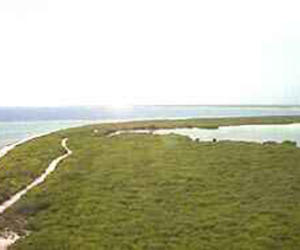Key Sabinal, a nature without boundaries
- Submitted by: manso
- Travel and Tourism
- 06 / 20 / 2011

The peninsula of Sabinal is a northern portion of Nuevitas that should be called instead "Island of Sabinal", because it is separated from the city by tidelands, bays and inlets, in fact it is an idyllic Kingdom of nature.
With irregular figure, with generally flat land, marshes and small lakes communicating each other with the sea by means of long tidelands, the place owes its name to the sabina tree( Podocorpues augustifolius), kind of a sandalwood or juniper that grows there.
In ¨Punta de Maternillos, the Lighthouse "Columbus" from 1847 is found, a necessary view point for those sailing through the Channel of Bahamas.
From the eastern coast of Sabinal, you can still find the ¨Fort of San Hilario, good as turret and barracks for the troop and the Spanish artillery. The castle was used as a prison of the Military Class from 1831, date in which it was built. San Hilario was, in 1875, scenario of the only Carlist rebellion that took place in Cuba.
Sabinal is plentiful of trees like atejes ( Cordia collococca), llana, the sabina (specially used in woodwork because of its fragrance, blushed color and lack of insects); also there is plenty of sabicú (Mimosa odorantissima) , oak, acana( Onopordium acanthium), yaya( Oxandra lanceolata), Jiquí, red beadtree, cedar and the guayacum trees.
Land in general is fertile especially for the production of yucca, sugar cane, tobacco, corn, bananas, watermelons, pumpkins and grasses for the livestock.
Fauna is characterized by the presence 0f polymita picta cubensis, Cuban hutia, river turtles, deer, pigs and bovine wild, the Cuban Trogon ( Priotelus Temnurus) - Cuban national bird - and the commonly called "negrito", Cuban Bullfinch, a showy bird singer.
Beautiful virgin beaches, spread around dozens of kilometers, which invite you to plunge into the pleasant environment of "Sabinal" that also stores beautiful legends.
Source: http://www.radionuevitas.icrt.cu/ingles/
Comments